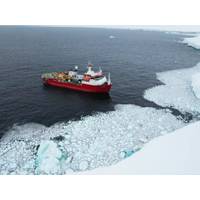
As Ice Recedes, Italian Ship Makes Record Journey into Antarctic
researching in the Antarctic has sailed further south than any ship has done before, the organizers of the voyage said on Tuesday, a further sign of how ice is retreating around the poles.The Laura Bassi vessel reached a point with the coordinates of 78° 44.280 S in the Bay of Whales in the Ross Sea, according to Italy’s National Institute of Oceanography and Applied Geophysics.The voyage was made possible by an unusual lack of ice in the area, it said. Satellite analysis last year showed that Antarctica’s coastal glaciers are shedding icebergs more rapidly than nature can replenish
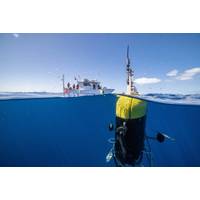
Academia’s Climate Change Challenge is Far from Academic
every two seconds. Thanks to rubber maps laid out in the water to relate the images to real features on the ground, the photos are stitched together into 2D or 3D models. The images are then run through computer software training to identify the types of seaweed.In the kelp forests of Antarctica’s Ross Sea, underwater ROVs are playing a role in ecosystem health assessment, too. The BoxFish ROV in question can survey Antarctic marine life more than 100 meters below the surface with its sensors and high-definition cameras, tethered to a surface ship with fiberoptic cables for data transfer. A recent
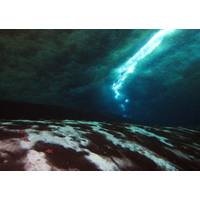
Scientists Discover First Methane Seep in Antarctic Sea Floor
discovered an active methane seep from Antarctica's sea bed that could shed light on the potent greenhouse gas trapped beneath the frozen continent.Marine ecologist Andrew Thurber first glimpsed what a colleague described as a "microbial waterfall" during a dive in the icy waters of the Ross Sea in 2012. What looked like a superhighway of white patches on the ocean floor were clusters of tiny organisms drawn to the methane leak."My first thought was 'wow,' and I was immediately enamored with what this means for science," said Thurber, an assistant professor at Oregon State
Deep-Sea Coral Gardens, Graveyards Discovered Off Australia
encircles Antarctica, it is the main driver of the global climate engine and regulates the supply of heat and nutrient-rich waters to the major oceans. “A particular species of solitary cup coral was found during the expedition. This is significant because we are working on the same coral in the Ross Sea on the Antarctic shelf, in much colder waters”, said collaborator and co-Chief Scientist Dr Paolo Montagna from the Institute of Polar Sciences in Italy. “This is an important connection between disparate sites across the Southern Ocean, which helps us trace changes in water masses forming

A Record-Low Start to Ice the New Year in Antarctica
continent, although regions of open water had begun to appear along portions of the coast near the Amery Ice Shelf and within the ice pack to the east of the Weddell Sea (Figure 3). Despite being ice-covered at the beginning of the month, concentrations were quite low in the eastern Weddell, eastern Ross Sea, and the region north (and to either side) of the Amery. These areas have since melted out completely. Many other areas of low concentration ice remain, particularly in the northeastern Weddell Sea and the northern Ross Sea (Figure 4). These areas are expected to melt out soon.Six to eight weeks
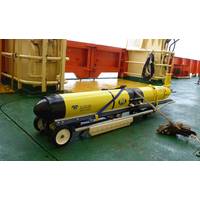
Glider-Based Ecosystem Study
student of Dr. Grace Saba (Assistant Professor, Rutgers University, Center for Ocean Observing Leadership) deployed a Teledyne Webb Slocum Glider with an integrated ASL Environmental Sciences Inc. Acoustic Zooplankton Fish Profiler (AZFP) 38, 125 and 200 kHz instrument in the Terra Nova Bay (Ross Sea, Antarctica). The deployment lasted 3 weeks and the glider was recovered on January 31, 2018. The purpose of this deployment was to obtain mesoscale and sub-mesoscale measurements of hydrographic processes and simultaneous biological distributions and abundance. From the
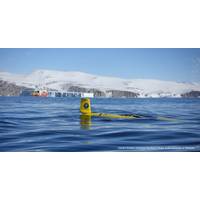
New Slocum Glider Delivered to UC Davis
Teledyne Webb Research said it has recently sold and delivered a Slocum Glider to The University of California, Davis. After its maiden flight in Antarctica, where the vehicle was initially used to examine physical processes of ice shelves in the Western Ross Sea, the glider has now been delivered to Davis where plans are underway for its new deployment in Lake Tahoe. The glider shipped to UC Davis is equipped with a Seabird SBE pumped CTD, Wetlabs FLBBCD sensor and two customer supplied sensors including an Aanderraa oxygen optode and a sonotronics fish pinger. The
Antarctica’s Ross Sea Gets Protection
The Commission on the Conservation of Antarctic Marine Living Resources (CCAMLR) today agreed to set aside more than 1 million square kilometres of the Ross Sea in recognition of its incredible scientific and biodiversity values. CCAMLR committed to creating a system of marine protected areas in the Southern Ocean in 2009 and has been discussing the creation of MPAs in the Ross Sea and East Antarctica for several years. Claire Christian, director of the Antarctic and Southern Ocean Coalition, said “ASOC is thrilled to see that CCAMLR has protected 1.55 million square km of the
AOA Calls for Southern Ocean Conservation Commitments
protected areas. (Please see attached map infographic.) The international nongovernmental organisations that make up AOA are calling for the immediate designation of both proposals rather than risk any further erosion. A joint proposal of the United States and New Zealand to designate a Ross Sea marine protected area (MPA) of 1.25 million square kilometres—with 1.14 million square kilometres proposed as “no take”—has been under consideration since 2011. The Ross Sea, one of the most pristine oceans remaining on Earth, is often referred to as “the Last Ocean


 February 2024
February 2024





